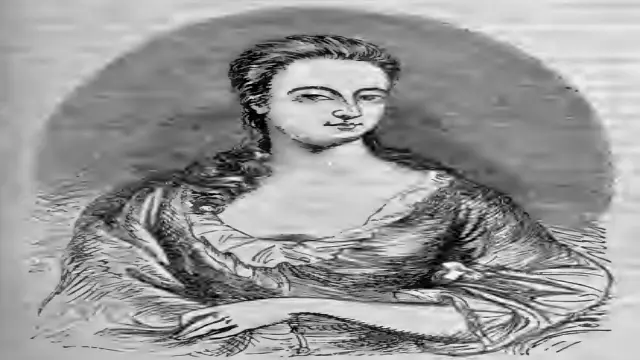Discover the Heartbreaking Story of Kitty Cannon’s Secret Life!
In the quiet parish of Thorpe, Essex, a remarkable story unfolded in the early 18th century. It revolves around a beautiful young woman named Catherine, affectionately known as Kitty Cannon. Her life was filled with love, secrets, and ultimately tragedy. Let’s dive into this captivating tale.
A New Beginning
On February 11, 1720, Robert Cooper and his wife Judith brought their newborn daughter, Kitty, to the church for baptism. Growing up, Kitty became known for her beauty, attracting the attention of many eligible bachelors from London. However, at just twenty years old, she surprised everyone by marrying the local vicar, Reverend Mr. Gough.
A Night to Remember
At a ball near Covent Garden, Kitty vanished from her husband’s sight. She eloped with John, Lord Dalmeny, the eldest son of James, the Second Earl of Rosebery. This young aristocrat was heir to a vast estate in Fife, Scotland. Kitty and Lord Dalmeny married in secret, and she accompanied him on a Grand Tour of Europe, claiming to be a widow.
A Life of Adventure
The couple traveled to many fashionable resorts in southern Europe. They seemed happy, enjoying their time together. However, tragedy struck in early 1752 when Kitty fell seriously ill in Florence. It soon became clear that she was suffering from tuberculosis, a disease that would prove fatal.

A Heartfelt Confession
On her deathbed, Kitty made a shocking confession. She called for pen and paper and wrote:
“I am really the wife of the Reverend Mr. Gough, vicar of Thorpe, near Colchester, Essex; my maiden name was Kitty Cannon, and my family belong to the same parish. Bury me there.”
This revelation of bigamy devastated Lord Dalmeny, but he was determined to honor her last wish.
The Journey Home
After Kitty’s death, Lord Dalmeny had her body embalmed and placed in a beautiful oak coffin adorned with silver plates. He transported her remains to Marseilles, then disguised himself as Mr. Williams, a Hamburg merchant, to sail to Dover.
A Suspicious Arrival
Unfortunately, strong winds forced the boat to Colchester instead of Harwich. Customs officers grew suspicious of Lord Dalmeny, believing him to be a Jacobite sympathizer smuggling goods. When they threatened to open the crates, he drew his sword and confessed the truth.
The Shocking Discovery
The customs officers opened the coffin, revealing Kitty’s embalmed body. News of the strange events spread quickly through the village. Many locals recognized Kitty, who had vanished after marrying the vicar.
Confrontation with the Vicar
Reverend Gough was summoned. Initially hostile, he threatened Lord Dalmeny but soon listened to his story. Understanding the young lord’s innocence and devotion to Kitty, he forgave him.
A Fitting Farewell
Once the authorities confirmed no crime had occurred, Kitty’s coffin was moved to Thorpe. On July 7, 1752, her funeral took place. As the procession passed the vicarage, Lord Dalmeny stopped and entered the house. He emerged arm-in-arm with Reverend Gough, both dressed in mourning attire.
A Grand Funeral
Kitty was laid to rest with all the honors befitting a peeress. Lord Dalmeny vowed to leave England and live in exile for the rest of his life. Tragically, he died just three years later, on August 11, 1755, at the young age of thirty.
The Aftermath
Reverend Gough never remarried and passed away in July 1774. A memorial stone for Kitty was later replaced by a plain stone, but the villagers of Thorpe remembered her story for generations.
A Legacy of Love and Loss
John, Lord Dalmeny’s name was removed from peerages to spare his family from shame. The title passed to his younger brother upon the Second Earl’s death.
A version of this story appeared in Once a Week (1862), written by Diana Butler, who claimed to be Kitty’s great-niece. She changed the names to Kitty Holcomb, Viscount Dalrie, and Reverend St. George.
Conclusion: A Unique Tale
Kitty Cannon’s story is one of love, loss, and the complexities of life. She became the first woman in England to have two husbands follow her to the grave. This tragic tale continues to resonate, reminding us of the enduring power of love and the consequences of secrets.

